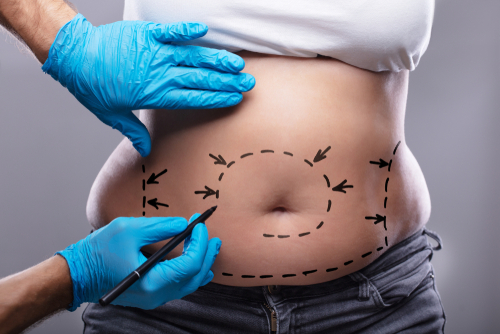
It’s understandably frustrating when “problem areas” of fat on your body persist, despite making smart food choices and exercising regularly. Therefore, you may be considering liposuction and wondering whether it’s right for you. Plastic Surgeon Daniel Schmid, MD helps answer some questions you may be asking.
What is liposuction?
Liposuction, also known as lipoplasty or lipo for short, is a surgical procedure that removes unwanted fat from specific areas of the body. Body areas commonly treated with liposuction include the abdomen, ankles, buttocks, chin and neck, hips and thighs, and upper arms.
Dr. Schmid says it’s important to know what liposuction can and cannot accomplish. “The most common misconception of liposuction is that it’s for weight loss when it’s actually for contouring,” he says. “Candidates for liposuction should be near their ideal weight.”
If you’re overweight, shedding extra pounds may be better achieved through diet and exercise or weight loss surgery. Liposuction also is not an effective treatment for cellulite or loose skin.
How is liposuction performed?
Liposuction is performed in an accredited office-based surgical facility, a licensed ambulatory surgical center, or a hospital. Depending on the amount of fat being removed, a patient will receive local anesthesia, intravenous sedation, or general anesthesia for their comfort before the procedure begins.
With all liposuction techniques, a surgeon will make small incisions into the areas where fat will be removed. Whenever possible, these incisions are in discreet areas such as the bikini line, belly button, or other natural creases on the body.
Through these incisions the surgeon will insert a small hollow tube called a cannula under the skin. A surgical vacuum or syringe connected to the cannula then suctions out fat cells and fluids. These basic steps all are involved in specific techniques a surgeon will decide to use:
- Tumescent liposuction refers to the fluids injected into the area treated, rather than the technique itself. The fluids are a sterile solution containing numbing and blood vessel-constricting medications to increase patient comfort and minimize bleeding. The surgeon moves the cannula back and forth to loosen fat before it’s suctioned out of the body. Tumescent liposuction is the industry standard of care, with the other techniques being variations in terms of the specific device used to target the fat.
- Power-assisted liposuction uses an electric motor to assist the surgeon in the cannula’s movement. This technique is commonly used for first procedures, according to Dr. Schmid, and may also be used to remove large volumes of fat or for secondary procedures.
- Laser liposuction, operating under brand names such as Smartlipo®, involves a laser device that breaks down fat before it’s removed with the cannula. The device’s thermal energy tightens the tissue around the area being treated, which can help with contouring.
- Ultrasound-assisted liposuction is sometimes used and involves a device that emits ultrasonic energy to break down fat for removal.
No one technique delivers an outcome different than the others; rather, a surgeon’s preference drives which will be used. “Factors such as skin tone and the area of the body are considered when determining technique, and those factors will be discussed with the patient during their consultation,” says Dr. Schmid.
Depending on the extent of fat removal, a liposuction procedure can take up to several hours. Patients will spend time in a recovery room afterward for monitoring, and if they’ve received sedation or anesthesia, a friend or family member will need to drive them home.
What is recovery from liposuction like? What results can I expect?
Bruising, swelling, and discomfort after liposuction are to be expected. The surgeon will provide recovery instructions, including medication for pain relief, infection prevention, and when to come back for a follow-up visit. Depending on the extent of the surgery, patients may need to take from a couple days to a week or more off work, and strenuous activity is discouraged for two weeks or more.
A compression garment must be worn for several weeks following liposuction to help reduce swelling. Dr. Schmid says he often recommends lymphatic massage two weeks after a procedure to further help with swelling. He adds that swelling is the last to resolve, although most of it is gone within one to two months. In some cases, a touch-up procedure may be needed.
Liposuction results are generally long-lasting, provided weight and general fitness are maintained. Over time, it’s natural to experience the loss of skin firmness that comes with aging.
Am I a good liposuction candidate?
In general, good candidates for liposuction have firm, elastic skin and are near their ideal body weight. Being in good health and without conditions that could complicate surgery also make one a good candidate.
During a consultation, the surgeon will want to review your medical history and discuss your concerns and goals for surgery, as well as the procedure’s limits and risks. The surgeon also will conduct an examination and take photographs of the areas to be treated, discuss liposuction options, and recommend treatment as well as preparation steps.
In addition to these topics, be prepared to ask about the surgeon’s training and experience, Dr. Schmid says. “Ask to see before-and-after photos of their work,” adding that a surgeon should be board-certified by the American Board of Plastic Surgery.
For good candidates with specific goals, realistic expectations, and a positive outlook, liposuction is a safe cosmetic procedure that can address stubborn fat deposits and achieve a satisfying result.
